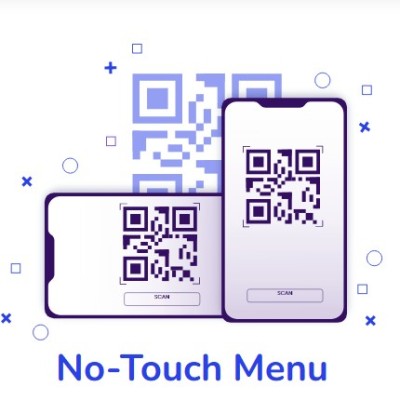In an era dominated by digital communication and transactions, ensuring the security and authenticity of documents is paramount. Traditional signatures, while effective in the physical realm, are vulnerable to forgery, loss, and damage. Digital signature online offers a robust alternative, leveraging cryptographic techniques to verify document integrity, authenticity, and non-repudiation. This article explores how digital signatures enhance document security in online environments and why businesses and individuals should adopt them.
Understanding Digital Signatures
A digital signature is an electronic fingerprint that validates the authenticity and integrity of a document. It is generated using a public-key cryptographic system, ensuring that any alterations to the signed document can be detected instantly. Unlike electronic signatures, which may involve scanned images of handwritten signatures or typed names, digital signatures offer a higher level of security through encryption.
The process to apply for Digital Signature
Step 1: Visit Our Website
Go to our website to start the process.
Step 2: Fill in Your Details
User Type: Choose if you are an individual or an organization.
Certificate Type: Pick if you need it just for signing documents or for both signing and encryption.
Validity: Choose how long you want the certificate to last.
Personal Info: Enter your name, phone number, email, and address.
Agree to Terms: Check the box to agree to the terms.
Submit: Click the submit button.
Step 3: Choose Token Option
Already Have a Token?: If you have a USB token, choose "No." If you need a new one, choose "Yes."
Step 4: Make Payment
Payment: Enter your payment details and choose how you want to pay (net banking, credit card, debit card, or UPI).
Step 5: Complete the Process
Review: Make sure all your information is correct.
Submit: Click submit and wait for a confirmation email.
Step 6: Get Your Digital Signature
You’ll receive your digital signature on a USB token drive after processing.
Key Benefits of Digital Signatures for Document Security
1. Ensuring Document Integrity
Digital signatures use cryptographic hashing to create a unique fingerprint for a document. When a document is signed, this fingerprint is encrypted using the sender’s private key. If the document is altered in any way after signing, the hash value will change, immediately alerting the recipient to potential tampering.
2. Preventing Unauthorized Modifications
One of the primary concerns in digital communication is unauthorized modifications to sensitive documents. Digital signatures prevent such alterations by ensuring that any change to the document after signing invalidates the signature. This guarantees that recipients receive the exact version of the document intended by the sender.
3. Providing Authentication and Non-Repudiation
Digital signatures authenticate the sender’s identity through Public Key Infrastructure (PKI). This prevents impersonation and ensures that the signer cannot later deny signing the document (non-repudiation). Organizations can rely on digital signatures for legally binding agreements and compliance with regulatory requirements.
4. Enhancing Security with Encryption
Encryption plays a crucial role in digital signatures, safeguarding documents from unauthorized access. By encrypting the signature with a private key and allowing decryption only with the corresponding public key, digital signatures prevent interception and misuse.
5. Facilitating Compliance with Legal and Industry Standards
Many industries, including finance, healthcare, and government sectors, require stringent security measures for document authentication. Digital signatures comply with various legal frameworks, such as the eIDAS regulation in the EU, the Electronic Signatures in Global and National Commerce Act (ESIGN) in the US, and India’s Information Technology Act, ensuring their validity and enforceability.
6. Reducing the Risk of Fraud and Identity Theft
Fraudulent transactions and identity theft are major concerns in digital interactions. Digital signatures mitigate these risks by verifying the signer’s identity and ensuring that signatures are unique and verifiable. Multi-factor authentication (MFA) and biometric verification further enhance security.
7. Enabling Secure Remote Signing
With the rise of remote work and global collaborations, the ability to sign documents securely from anywhere is crucial. Digital signatures enable remote signing while maintaining security, making them indispensable for businesses operating across different geographies.
How Digital Signatures Work
Digital signatures operate on a framework involving cryptographic keys, certificate authorities (CAs), and hashing algorithms. Here’s how the process works:
Document Hashing: When a document is signed, a hashing algorithm generates a unique hash value.
Encryption with Private Key: The hash value is encrypted using the sender’s private key, creating the digital signature.
Transmission and Verification: The signed document and the public key are sent to the recipient.
Decryption and Comparison: The recipient decrypts the signature with the sender’s public key and rehashes the document. If the hash values match, the document is verified as authentic and unaltered.
Applications of Digital Signatures in Document Security
Business Agreements and Contracts
Companies use digital signatures to secure contracts, agreements, and NDAs, ensuring authenticity and preventing disputes over document validity.
Financial Transactions
Banks and financial institutions implement digital signatures to secure transactions, loan approvals, and online banking activities, reducing fraud risk.
Legal Documents and Compliance
Legal professionals use digital signatures to authenticate legal documents, wills, and court filings, ensuring compliance with regulations.
Healthcare Records and Insurance Claims
Digital signatures help protect patient records, prescriptions, and insurance documents from unauthorized access and tampering.
Government and E-Governance Services
Governments worldwide use digital signatures for tax filings, e-voting, and digital identity verification, enhancing transparency and security.
Future of Digital Signatures in Document Security
As technology evolves, digital signatures will continue to advance with innovations such as blockchain-based signatures, biometric authentication, and AI-driven verification systems. These developments will further strengthen document security, making digital signatures an indispensable tool in the digital landscape.
Suggested read:- Digital Signature Certificate for Income Tax
Conclusion
Digital signatures play a critical role in improving document security by ensuring integrity, authenticity, and non-repudiation. Their encryption-based protection mechanisms safeguard documents from tampering, fraud, and unauthorized modifications. As businesses and individuals increasingly move towards digital transactions, adopting digital signatures becomes essential for enhancing security and trust in online communications. By leveraging digital signatures, organizations can achieve compliance, streamline workflows, and protect sensitive data in an ever-evolving digital world.










